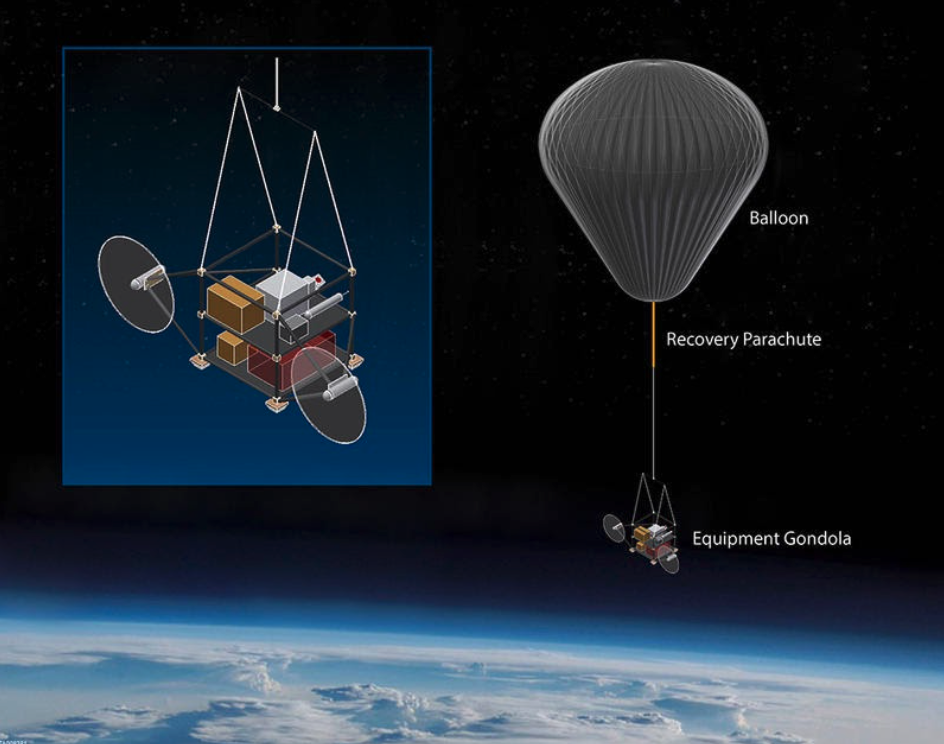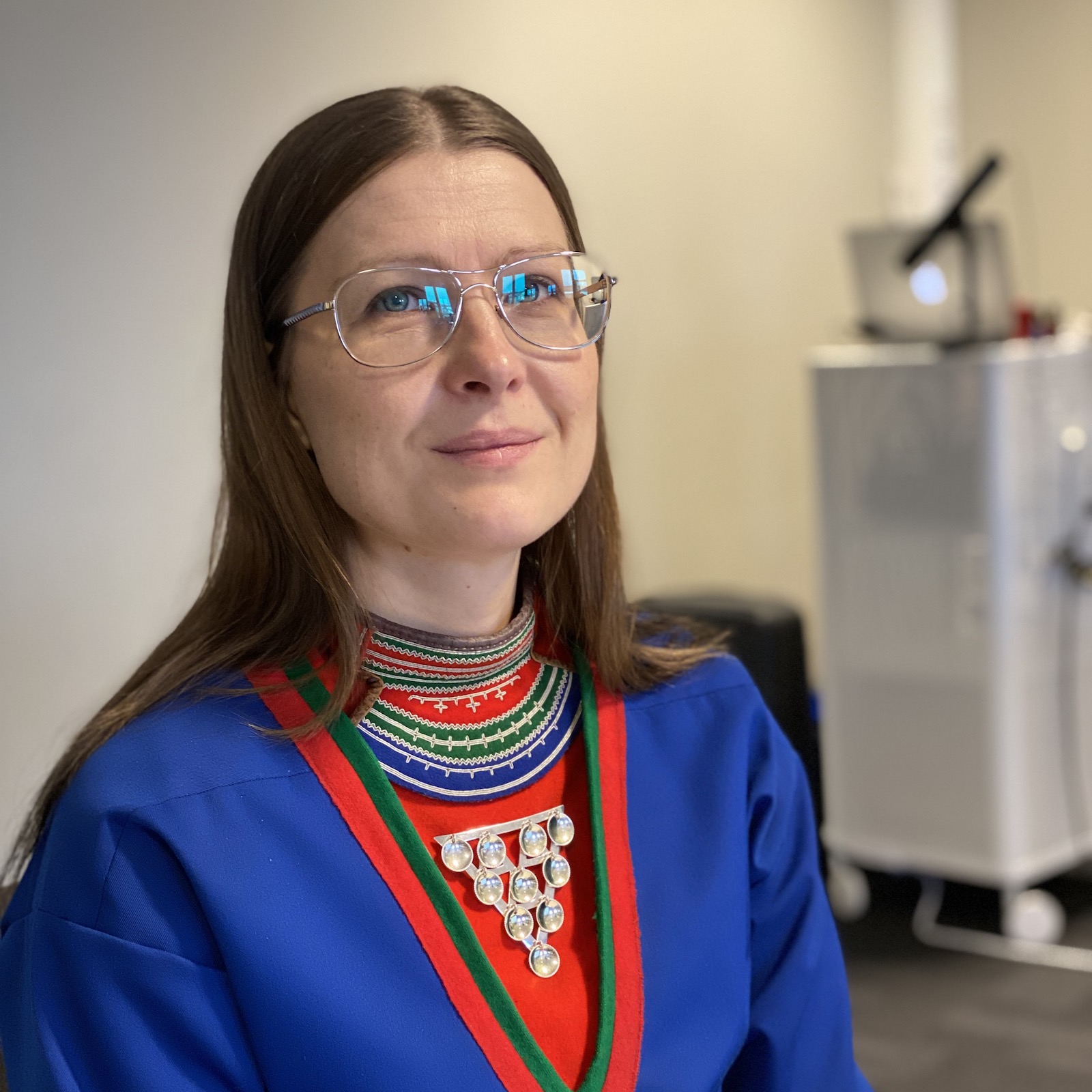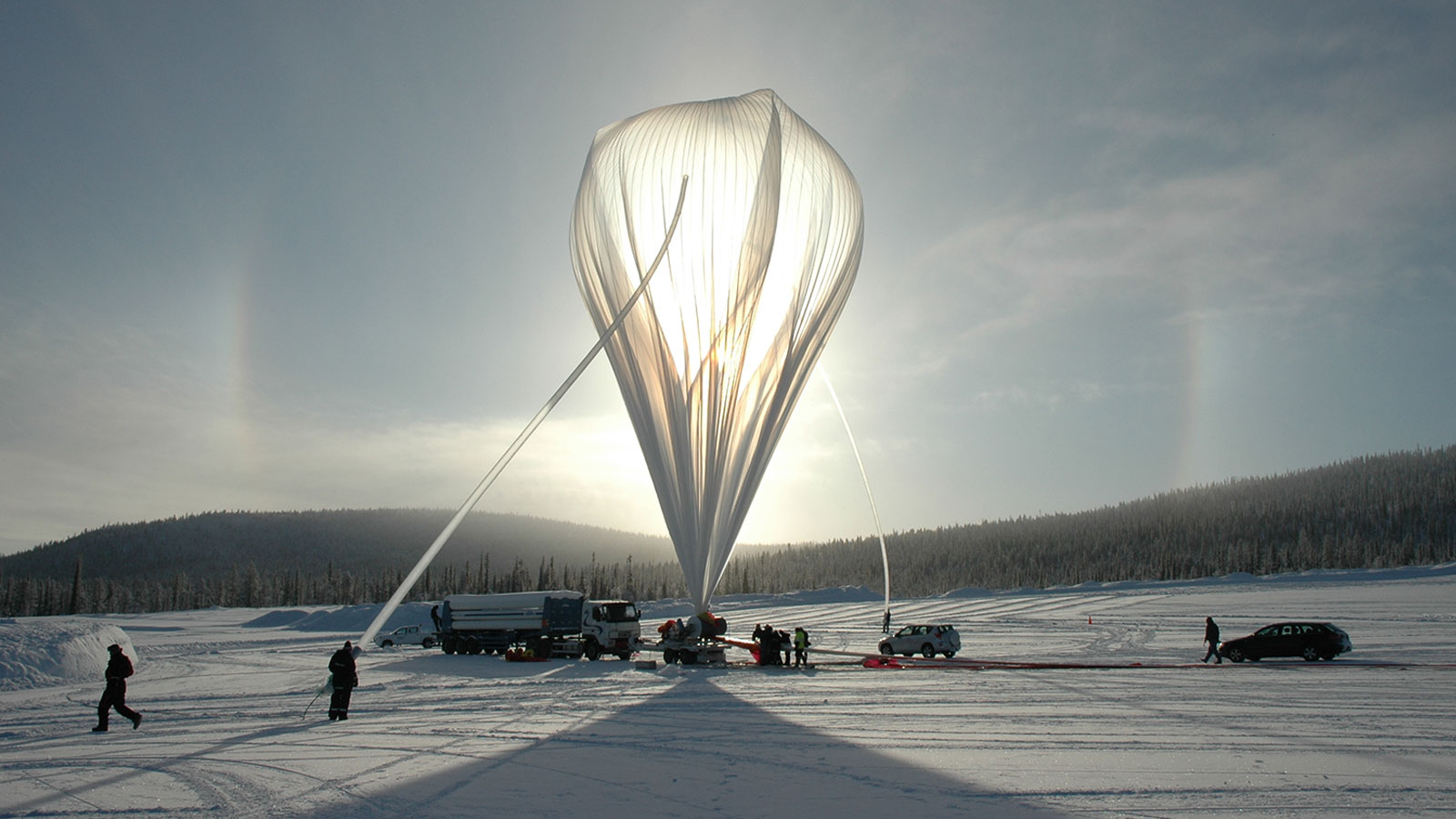The experiment sounded innocuous. Early this summer, a group of researchers from Harvard University would fly to Kiruna, a small town of 22,000 in the northern reaches of Sweden. There, with the help of a Swedish space company, they would launch a balloon carrying an instrument-laden gondola into the stratosphere, some 12.5 miles above the Earth’s surface. They would run a few tests, pack up the instruments, and then return home.
That, at least, was the plan. But some saw the project — known as the Stratospheric Controlled Perturbation Experiment, or SCoPEx for short — as something less innocent. It was poised to be one of the first outdoor experiments into what is known as “solar geoengineering”: the process of spraying particles into the upper atmosphere to reflect sunlight and, ideally, counter the skyrocketing temperatures caused by climate change. It’s a technology so controversial that even the prospect of researching it can provoke anxiety — and backlash.
SCoPEx was no exception. The team didn’t plan to release any particles over Kiruna; the first flight was simply a dry-run for the instruments and the balloon’s propellor-powered gondola. But in February, shortly before an independent Harvard advisory committee was expected to give the go-ahead, a group of Swedish environmental organizations and the Indigenous Saami Council sent a letter demanding the project be canceled. “The SCoPEx plans for Kiruna constitute a real moral hazard,” they wrote, adding that the technology “entails risks of catastrophic consequences.” Some segments of the media adopted a more frenzied tone, blurring facts in an effort to get clicks. “Bill Gates wants to spray millions of tonnes of CHALK into the stratosphere,” the Daily Mail proclaimed. (Gates financially supports Harvard research into solar geoengineering, but hasn’t spoken in support of the SCoPEx project itself.)
After weeks of delay, the Harvard advisory committee — a group of nine experts with the final say on whether the test goes forward in Sweden — announced that, due to the backlash, the project had been put on hold, pending further “societal engagement” with the Swedish public. The launch, they said, would not take place until 2022 — if at all.
“I was frustrated, for sure,” said David Keith, a professor of physics at Harvard University who helps lead the project. “My strong impression is that there is growing agreement in the international and environmental community that research on this topic makes sense.”
It’s yet another holdup for solar geoengineering research. Although reflecting the sun to slow global warming has been discussed for over half a century, precious few experiments have actually taken place. Some have progressed with little media attention or controversy — scientists have tested cloud-brightening off the coast of California and over the Great Barrier Reef in Australia — while others have become mired in disagreement and doubt. In 2012, for instance, a British project to reflect the sun with water droplets was canceled due to conflict-of-interest concerns over patents.
Now, as scientists and activists continue to debate the wisdom of performing this kind of research, SCoPEx is starting to look like an entirely different kind of experiment: a foray into who gets to decide whether solar geoengineering research takes place — and how.
It’s hard to find anyone who says that solar geoengineering should be deployed anytime soon — or ever. Although reflective particles already make their way into the atmosphere (both from aerosol pollution and volcanic dust and ash), purposefully altering the skies already pumped full of carbon dioxide seems misguided at best — and disastrous at worst. Solar geoengineering, after all, isn’t a true climate change “solution”; it doesn’t suck CO2 back out of the sky or reverse the long-term trajectory of warming. At best, it could temporarily turn down the heat while the world struggles to cut emissions permanently. And to many people, it’s just plain scary.
But some scientists believe that warming has advanced so far that dimming the skies should at least be researched — even if the technology is never used. The world has already warmed 1.2 degrees Celsius since pre-industrial times, creeping ever closer to the 1.5-degree C mark that has become synonymous with deadly heat waves, devastated ecosystems, and surging sea levels. In some parts of the tropics, the combination of rising heat and humidity has already begun to push outdoor temperatures to the limit of what humans can survive. If solar geoengineering has been well-studied — and found effective and safe — it could provide an emergency, break-the-glass response if warming becomes unbearable.
“We should not be seeking to do these [experiments] because we like them,” said Peter Frumhoff, the chief climate scientist at the Union of Concerned Scientists. (He also helped select members for SCoPEx’s advisory committee.) “It’s just that we’re in a really serious moment — and our ambition to address the problem hasn’t been sufficient.”

Scientists also argue that the risks of such research should be vanishingly small. In the SCoPEx project, for example, the first flight wouldn’t have released any particles whatsoever; on later flights, likely over the American Southwest, researchers planned to release four and a half pounds of calcium carbonate (effectively, chalk dust) or sulfates, which are common ingredients in detergents or shampoos. (Four and a half pounds, one of the researchers has noted, is less material than what’s released every minute by the average commercial aircraft.) And the goal of the experiment isn’t to measure how much these chemicals actually reflect sunlight; it’s to analyze how they mix and interact with the other particles in the stratosphere.
“A lot of the risks I actually worry about are that the gondola tips over and hurts somebody,” Keith, the Harvard professor, said wryly.
But even if the immediate risks of the research are negligible, opponents argue that launching the balloon could create other problems down the line. One argument is that there is a “slippery slope” from researching geoengineering to actually deploying it. Today, the thinking goes, it’s a research balloon with an instrument-laden gondola; tomorrow, it’s a dystopian fleet of government aircraft, spraying cooling particles into the air.
“You can’t see this test as a separate thing,” said Johanna Sandahl, president of the Swedish Society for Nature Conservation, who signed the letter calling for the project to be canceled. “You need to see it as part of developing this really dangerous technology. The final thing you’re actually experimenting with is the climate and the entire earth system.”
Critics say that research into dimming the sun could also distract from the hard work of slashing carbon emissions now — or, even worse, encourage corporations and governments to continue burning as many fossil fuels as they can find. This is why solar geoengineering has often been called a “moral hazard.” If we have the ability to shield ourselves under an aerosol umbrella at a relatively low cost (according to one estimate, a global solar geoengineering program could cost as little as $2 billion a year), why bother with the costly and difficult transition to renewable energy at all?
Keith says that he worries constantly about the “moral hazard” dimension of his research. “I lose sleep over it,” he said. But, he added, “I’m confident that it’s not ethical to withhold lifesaving things over that risk.” In the 1990s and early 2000s, he points out, spending money on adapting to climate change (building seawalls, retreating from runaway wildfires) was itself seen as a moral hazard — so much so that former vice president and climate activist Al Gore called it a “kind of laziness” in a 1993 book.
For Keith, the risk of decreased emissions cuts doesn’t outweigh the benefits of helping the millions of people in countries like Bangladesh survive increasingly brutal temperatures. Solar geoengineering research, he says, is similar to the many moral hazards that we have learned to live with over the years: needle exchange programs, for example, or even safety measures in cars. “There were serious people who said we shouldn’t introduce airbags, because it would encourage people to drive faster,” Keith said. “And it probably does, a little bit.”
For now, the SCoPEx project remains on hold. The advisory committee has promised to start a dialogue with the Saami Council and the environmental groups opposing the project. Members of the committee have also admitted that they misjudged how much backlash would arise just from the first test of the gondola. “It’s fair to say we had not anticipated the objections that would be raised in Sweden,” said Michael Gerrard, a member of the committee who also directs the Sabin Center for Climate Change Law at Columbia University.
But beyond the abstract term of “societal engagement,” none of the sources I spoke to seemed to know what level of support the project would need to garner to move ahead. Would it need to win approval from some fraction of the Swedish public or government? Or from the world at large? “We haven’t crossed that bridge yet,” Gerrard told me.
For its part, the Saami Council, which represents the Indigenous Saami people in Sweden, Norway, Finland, and Russia, has strongly opposed the project. “It goes against our worldview that we should respect nature,” said Åsa Larsson Blind, the vice president of the Saami Council. The group, she says, would be open to engaging with the researchers and the SCoPEx advisory committee about solar geoengineering in general — but not on this project specifically. “We have a very clear position that we do not approve of the development of solar geoengineering technology in Sápmi,” she said, using the Indigenous name for the areas traditionally inhabited by the Saami.

Frumhoff, who helped select the advisory committee, thinks that the experiment in Kiruna should be canceled and moved to another location. “Harvard should pull the plug,” he told me. “The Saami Council has rejected it. To go back and ask them again seems disrespectful.”
But it’s hard to determine how the wider public feels about the research. The letter sent by environmental and Indigenous groups urged researchers not to move forward until there was “full, global consensus” on the acceptability of solar geoengineering — an impossibly tall order for any controversial research. To make matters more complicated, social scientists have previously found that citizens of countries like China, India, and the Philippines are more likely to see solar geoengineering as a potential option than those from more developed countries. Who should decide whether an experiment should go forward — the people who live around it, or those who might stand to benefit from it the most?
Perhaps the scariest prospect is that if Harvard researchers don’t experiment with solar geoengineering, someone else still could. Holly Jean Buck, an assistant professor of environment and sustainability at the University at Buffalo, says that if scientists’ efforts to do transparent and publicly accountable research are repeatedly foiled — through a combination of media attention and vocal opposition — private corporations or the military might take matters into their own hands.
“Is that the kind of solar geoengineering you want to possibly be contending with in 2030, 2040, 2050?” she said. “I think it’s pretty clear that a publicly funded research program would be much better than the version of geoengineering we get when research is done in the shadows.”




